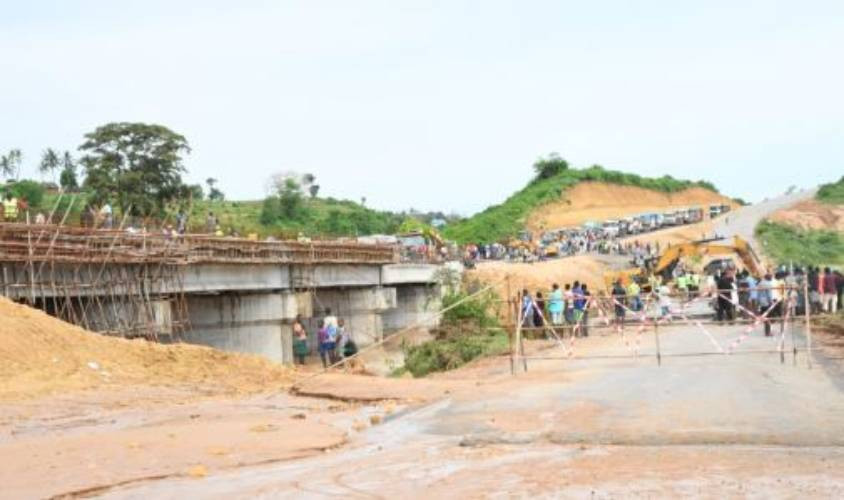A traffic snarl up stretching nearly 60km between Samburu and Maungu in Kwale that lasted nearly 24 hours on Tuesday made the Mombasa-Nairobi highway a living hell for hundreds of stranded motorists. Many spent the night in the cold, possibly without a meal.
The jam was apparently caused by unfinished work on a road diversion in Taru and a heavy downpour that rendered the muddy stretch impassable. Though the explanation by the Kenya National Highways Authority (KeNHA) seems plausible enough, there is a feeling that too little was done too late to get the flow of traffic back to normal.
Traffic snarl ups are becoming a way of life on the highways. On Saturday night, hundreds of motorists spent 10 hours between Nakuru and Naivasha in what Kenha attributed to an overflow from the Mombasa Highway gridlock. That again, though plausible does not hold any water.
Traffic snarl ups are costly: costly to the motorists; costly to the environment and generally, costly to the economy. Something ought to be done, urgently. While it is easy to apportion the blame to the indiscipline of some drivers, especially truck drivers who seek to beat delivery deadlines and resort to breaking the Highway Code at will, that should not be the case. While not exonerating the drivers for their wayward behaviour, other factors too contribute to making the highways a living nightmare.
In 2013, there was public outrage when a stand-off between Kenha and the Mariakani weighbridge management caused a 10-hour traffic delay after trucks blocked the road. In July, another snarl up caused travellers to spend hours on the road between Makupa and Miritini with protests in Jomvu. Although the government promised to build a 42km super highway between Mombasa and Mariakani to ease traffic flow by September 2015, that is yet to be realised and the problem persists.
The Mombasa- Nairobi road is the main economic artery between the coast and the hinterland. It is a major link between the East and Central African states that rely on the port of Mombasa for exporting and importing their merchandise. It would naturally be expected that a lot more resources are committed to ensure that the road that reportedly generates a third of the country’s income is free of any encumbrances. Alas, that is not the case. The closure, even for an hour of the road between Mombasa and the Malaba border impacts on the ease of doing business. While the time it takes to clear goods at the port has been greatly improved upon, traffic snarl ups have become a big let-down increasing the delivery time of goods.
In the three days that traffic to Mombasa was held up, Mombasa County which depends entirely on food supply from the interior, especially fresh farm produce and cereals, experienced food shortages with its markets failing to replenish depleted stocks. Add to that the lost man-hours, fuel costs and the wear and tear on the vehicles and the bill is staggering.
The economy takes a further beating when tourism, a major foreign exchange earner suffers. Earnings from tourism fell to Sh93.9 billion in 2015 from Sh96 billion in 2014. But while this was largely attributed to insecurity and travel advisories, impassable roads and poor access to tourist’s destinations especially at the Coast means tourists will keep away from these places.
Improving and expanding the road link between Mombasa and Nairobi must be prioritised, as much as the building of the Standard Gauge Railway line. The Government should not hesitate to invest more in infrastructural development projects that have a direct bearing on the health of the economy like the Mombasa- Nairobi highway.
 The Standard Group Plc is a
multi-media organization with investments in media platforms spanning newspaper
print operations, television, radio broadcasting, digital and online services. The
Standard Group is recognized as a leading multi-media house in Kenya with a key
influence in matters of national and international interest.
The Standard Group Plc is a
multi-media organization with investments in media platforms spanning newspaper
print operations, television, radio broadcasting, digital and online services. The
Standard Group is recognized as a leading multi-media house in Kenya with a key
influence in matters of national and international interest.
 The Standard Group Plc is a
multi-media organization with investments in media platforms spanning newspaper
print operations, television, radio broadcasting, digital and online services. The
Standard Group is recognized as a leading multi-media house in Kenya with a key
influence in matters of national and international interest.
The Standard Group Plc is a
multi-media organization with investments in media platforms spanning newspaper
print operations, television, radio broadcasting, digital and online services. The
Standard Group is recognized as a leading multi-media house in Kenya with a key
influence in matters of national and international interest.






